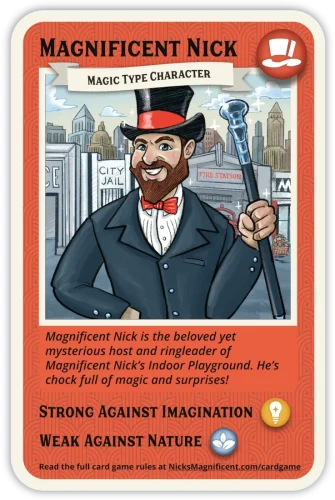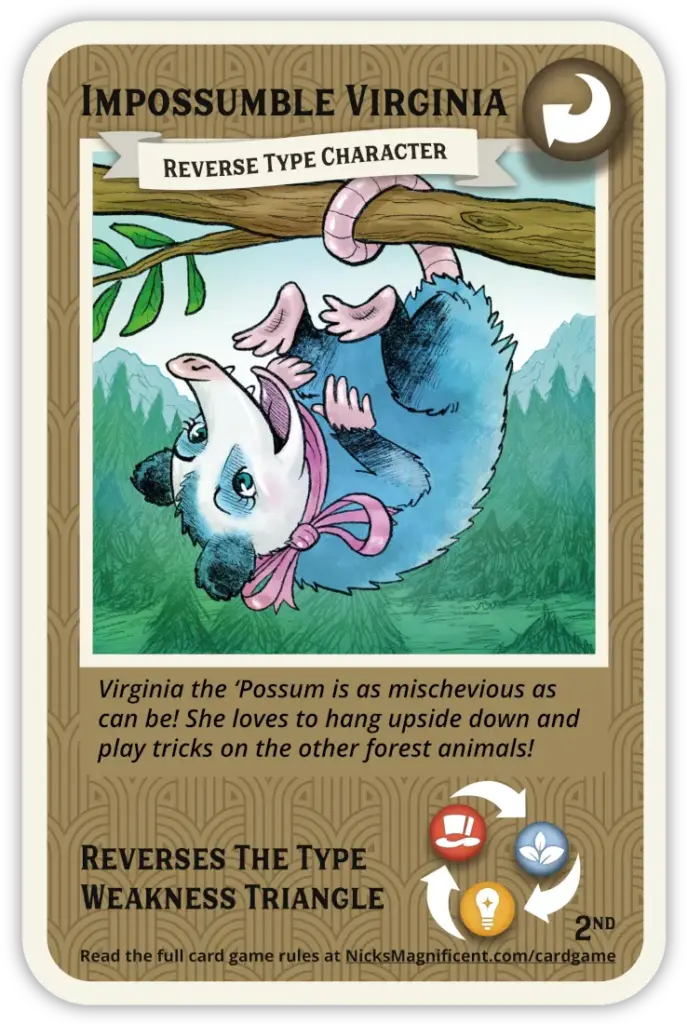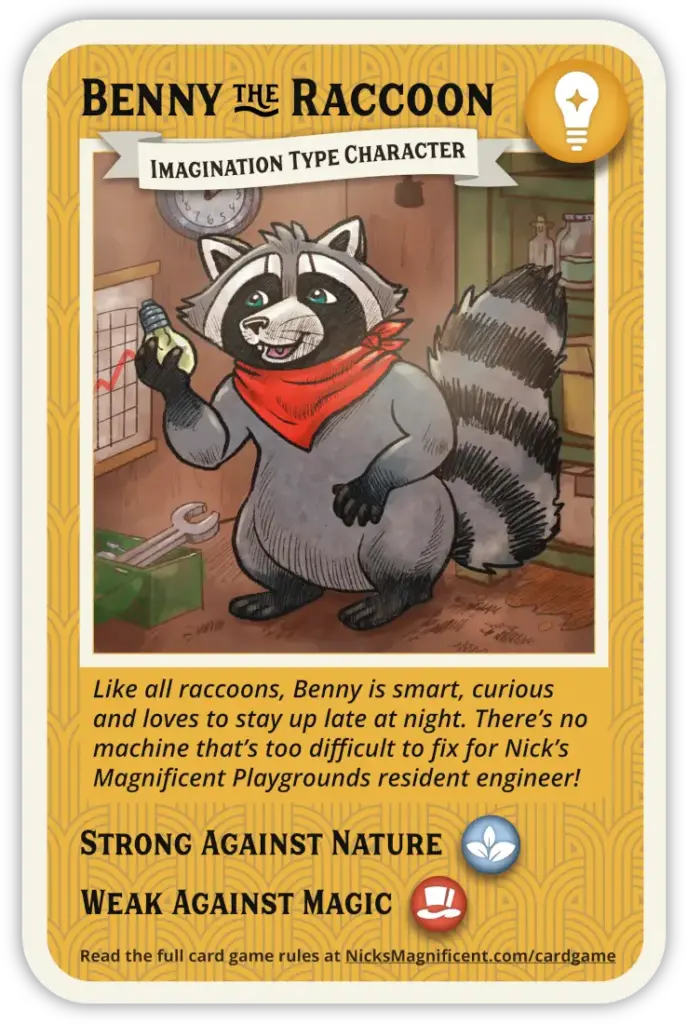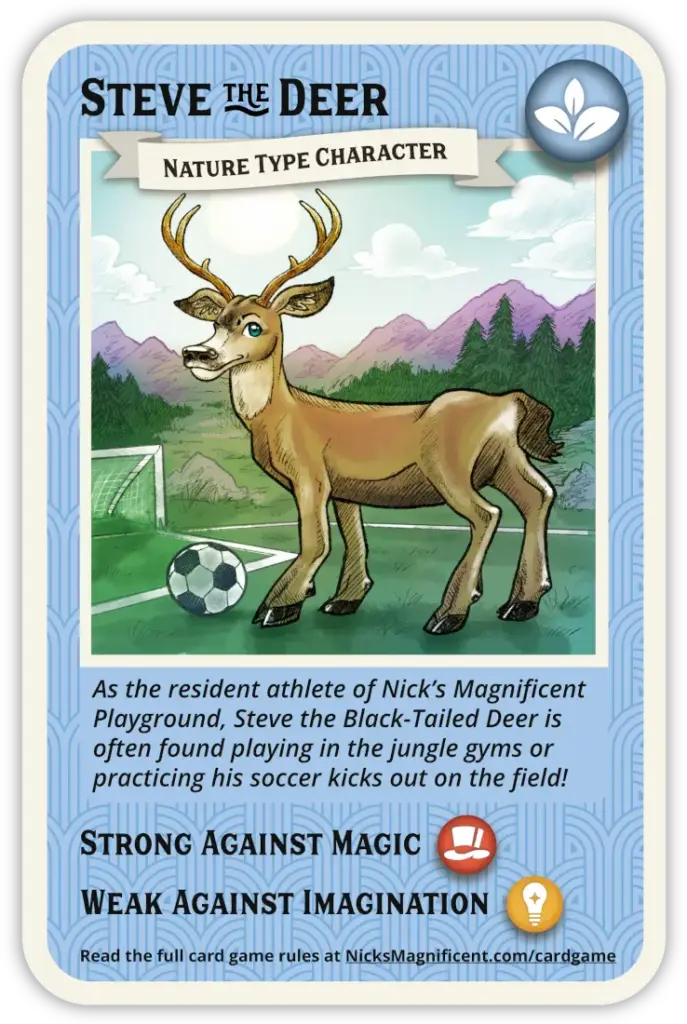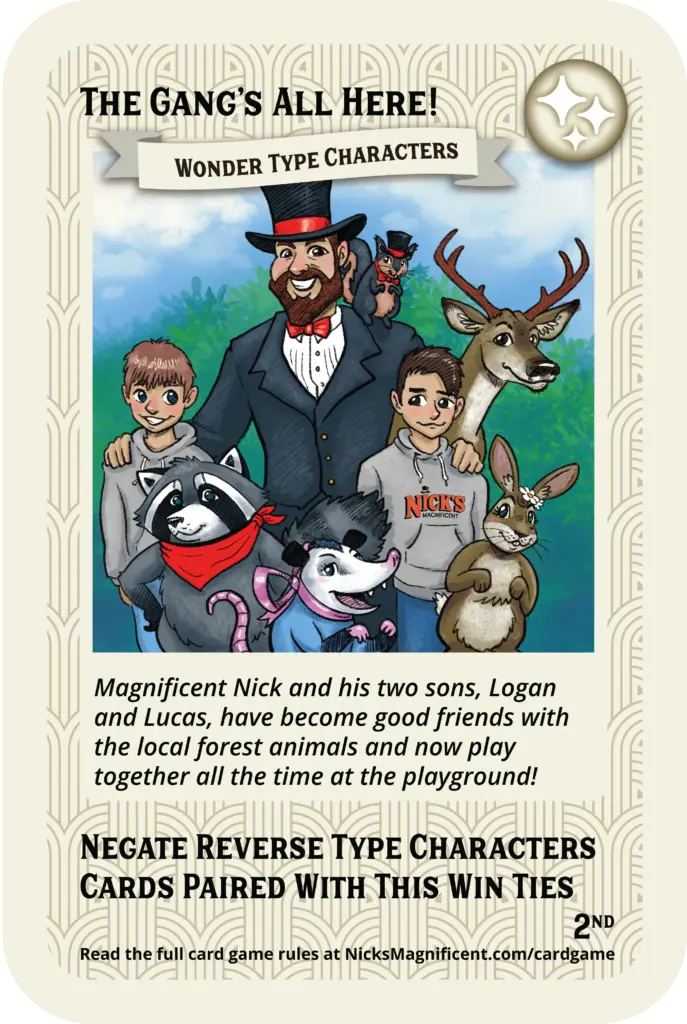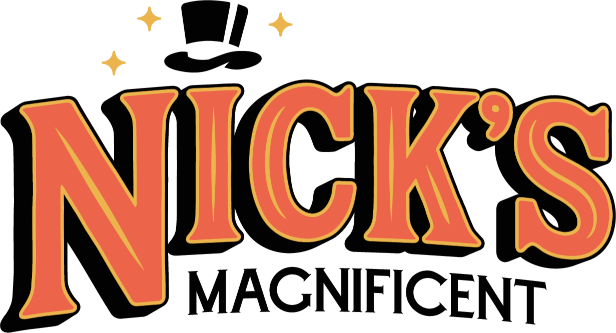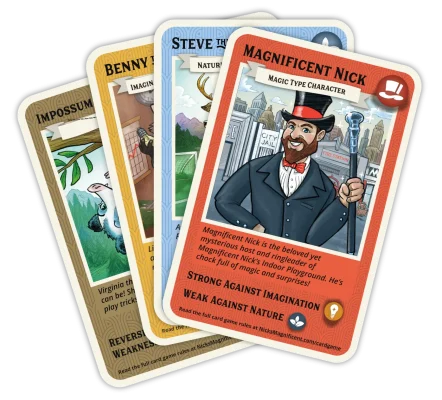
Introduction:
The Nick’s Magnificent Business Trading Card Game combines the useful nature of business cards containing contact information for Nick’s Magnificent associates with the fun and engaging collectability of playing card games such as Pokemon and Yu-Gi-Oh. If you’re here, you must have gotten your hands on one of these cards and want to know how the actual game is played. Simply put, this game is similar to Rock-Paper-Scissors in which you can play one or two cards from your hand at the same time as your opponent and see who wins based on your choices! Learn more about the game below!
The Cards:
Each card has 1 of 5 types, 3 main types and 2 special types, each representing one Magnificent Nick’s Brand Colors. Each card of the same type plays identically so you can swap out whichever character is your favorite as long as they are the same color/type.
Card types are as follows:
Red (Magic), Blue (Nature), and Yellow (Imagination), are the three main types while Brown (Reverse) and White (Wonder) are special types. The card game functions as a “Rock-Paper-Scissors” with the three main types, each being weak to one and beating the other in the triad. The two special types are “rare” cards that modify the rules of the gameplay when played in tandem with other cards. Each card has space for card art, and space to write lore about the corresponding characters as well as a simple explanation of how it works in-game.

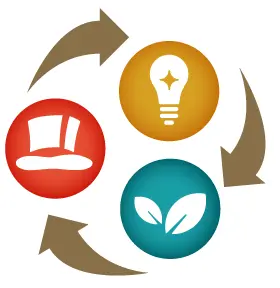
Gameplay:
Each player secretly chooses one or two cards from their collection into their hand. They will be playing one or both of them together at the same time as their opponent. Cards chosen by players will be designated as “Front Card” and “Back Card” based on which one is face-up first and second. If only one card is played, it functions as both. On the count of 3, both players reveal their choices and then based on the cards chosen and in what position, it is resolved to see who wins this round. The winning player may choose to initiate a trade from the cards their opponent played this round from ones in the winner’s deck.
Determining Winner:
The front card from each player is matched with the opponent’s front card. Special cards may only be placed as Back Cards so the front should be Blue, Red, or Yellow. If one is strong against the other and no special cards are played, the back card is irrelevant and the round resolves. If it’s a tie, the back cards are compared with each other to determine the winner.
HOWEVER, if any player played the Reverse back card, then the front cards are resolved in the OPPOSITE way as they normally would (ie, Red would win against blue instead of losing to it, Blue would win against Yellow instead of losing, etc). If two reverse cards are played they cancel each other out.
If a WONDER card is played, it not only cancels out a reverse card if the opponent played one, but it allows the front card to win any ties, giving it a significant advantage and making it a very rare card. If both players played a WONDER back card, they cancel out and may not be played in the subsequent round.
Examples:
Kid A plays Front (Red) Back (Blue)
Kid B plays Front (Red) Back (Yellow)
Because Front cards end in a tie, Back cards are used and Kid B wins since Yellow beats Blue.
Kid A plays Front (Yellow)
Kid B plays Front (Yellow) Back (Blue)
Because Front cards end in a tie, back cards are used. Kid A’s Yellow card is used in both slots and since Yellow beats Blue, Kid A wins.
Kid A plays Front (Blue) back (Reverse)
Kid B plays Front (Red) Back (blue)
Because Reverse is played, the normal winning order is reversed, so Red beats blue in the front card and Kid B wins.
Kid A plays Front (Blue) back (Reverse)
Kid B plays Front (Red) back (Wonder)
Because the Wonder card negates the presence of the Reverse card, the normal winning order is restored and Kid A wins.
